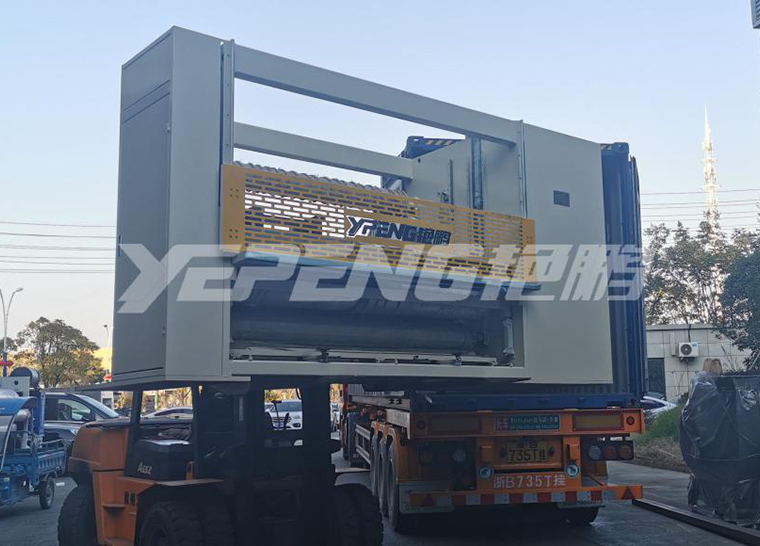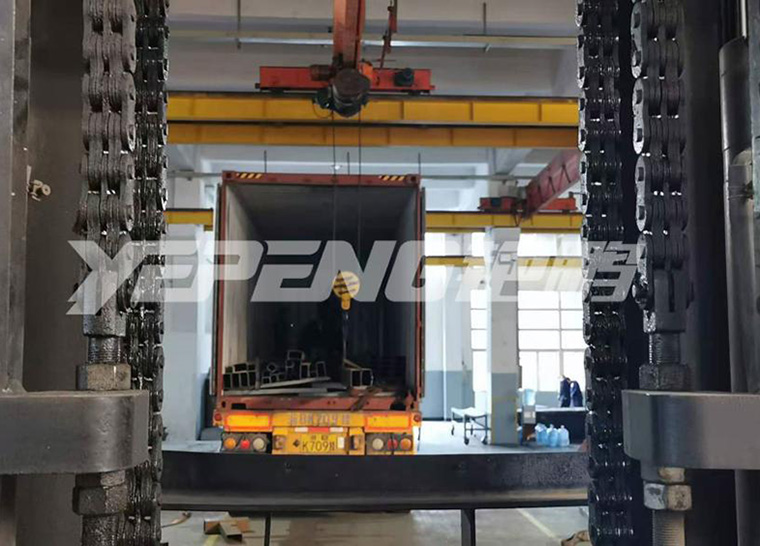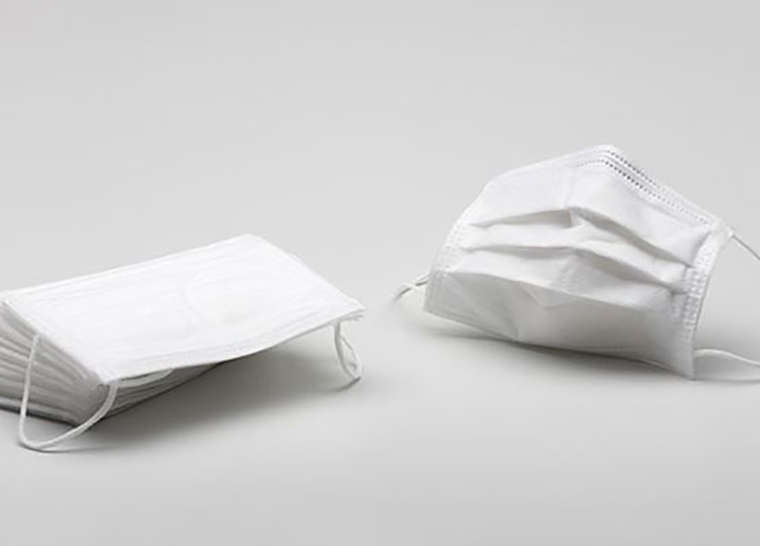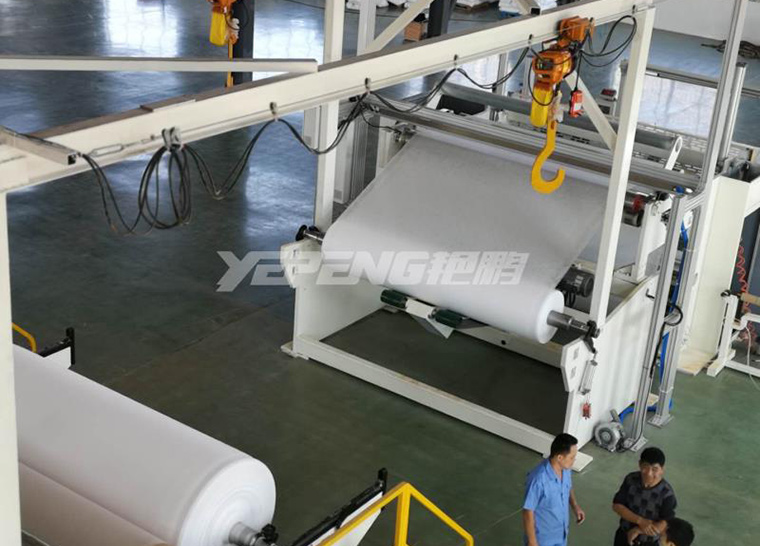5-6 September ,2020 The 27 th China spunbond and melt-blown nonwovens industry annual meeting held in Wenzhou. Gao Yong, Party Secretary and Secretary General of China Textile Industry Federation, Li Lingshen, Vice President of China Textile Industry Federation, Li Guimei, Vice President of China Textile Industry Association, Chen Lidong, President of China Textile Industry Association Nonwovens Branch, and more than 300 spunbonded and fused nonwovens industry participants attended the meeting.Zhejiang Yanpeng nonwoven machinery as members also participate this Annual.
Gao Yong said in his speech that the new crown pneumonia epidemic has promoted the change of the world pattern and brought a huge test to the textile industry. Since 2020, the medical and health and protective textile industry has achieved a significant increase in social and economic benefits. China's textile exports in masks, protective clothing and other anti-epidemic products support, to achieve positive growth. By the end of August, China had exported 130 billion face masks and 1.3 billion protective clothing. The export of masks and protective textiles accounted for more than 4 per cent of the total export volume of China.
But Gao Yong also pointed out that we should not be immersed in the success of the epidemic at this stage, should be prepared ahead of time. In the long run, industrial textiles are still the focus of global textile industry development and structural adjustment. Industry enterprises should prepare for the post-epidemic era, lay a good foundation, strengthen R & D, practice internal work, actively expand the use of non-woven products, and steadily digest the current surge in production capacity.
In his speech, Zeng Ruihua, head of the Ouhai District of Wenzhou City, said that in the face of the epidemic situation of the new crown pneumonia, the whole country was United and United. At the critical moment of the shortage of epidemic prevention materials, the spunbonded and meltblown nonwoven industries stepped forward and responded positively to the call of the state to do their utmost to ensure the supply of supplies. In a very short period of time, hundreds of millions of epidemic prevention materials, such as masks and protection, were provided to the whole country,Play a logistics "quartermaster" role. At present, Wenzhou has more than 20 spunbonded nonwoven enterprises, accounting for more than half of the national output value. In the future, Wenzhou government will continue to support the development of spunbonded industry and create a more regional competitive spunbonded nonwoven industry.
At the meeting, Li Lingshen explained the development of nonwovens industry in China in 2019, the contribution of nonwovens industry in China during the new crown epidemic, the social responsibility strategy of nonwovens industry after the new crown pneumonia epidemic, and the summary and prospect of nonwovens industry. He introduced, In 2019, China produced 6.223 million tons of nonwovens, an increase of 4.89% over the same period last year; China exports 1.05 million tons of nonwovens worth 3.11 billion dollars, 2015-2019, China's exports of nonwovens grew by 9.45% and 5.76% annually, The global market demand for China's non- woven fabric continues to grow at a high speed. Li said, China's nonwovens industry social responsibility strategy is to strengthen dialogue and collaboration with industry chain stakeholders, By leading technological innovation in the industry, Promoting industrial innovation, Promoting applied innovation, Promoting stable growth and sustainable development of the industry, Create value and share value.2020 is the end of the 13th Five-Year Plan, the industry will start the second century-old goal of the struggle. In the future, the nonwovens industry will focus on the weak links that restrict the high-end development of the industry in the whole industry chain, adhere to innovation-driven and demand-oriented, actively promote industrial foundation reengineering and industrial chain upgrading projects,adjust industrial structure and expand new applications. Enhance the global competitiveness of China's nonwovens industry.
Chen Lidong reported on the work of the 27 th annual meeting of the nonwovens Branch. In 2019, China's spunbonded nonwovens industry continued to be deeply adjusted, product structure constantly optimized; to cope with competition, pay close attention to technological progress and quality control management; to introduce intellectual support, the combination of industry, education and research is closer. Since this year, the spinning and melting nonwoven industry continues to serve the overall situation and make important contributions to epidemic prevention and epidemic prevention. On the one hand, in the face of the imbalance of supply and demand in the initial period of epidemic prevention, the spunbonded nonwovens industry is responsible for the production of 700 million masks in early March, reducing the huge pressure on the supply of national protective materials. On the other hand, the spunbonded branch is also organizing enterprises to resume production, provide information on supply and demand of materials, and switch production to epidemic prevention.
Material technical guidance, assist government material allocation, participate in the formulation of product standards have done a lot of work. In the post-epidemic era, China's spunbonded nonwovens industry should set up a war readiness thinking to devote itself to the supply of epidemic prevention materials at any time, set up a new pattern of economic development with "internal circulation" as the main body, attach great importance to the risk of overcapacity caused by excessive investment, and pay more attention to it Emphasis on internal management and quality improvement, pay more attention to enterprise law-abiding and integrity construction. In the future, spunbonded nonwoven enterprises should Aim at the commanding point of quality management, innovation technology, technology and equipment, and talent training, adjust the structural transformation, enhance the competitiveness and rank among the top of the industry or region in the rapidly changing market transformation.
Shen Ning, Director of Asia Marketing, Berry International Group HHS Division, introduced the global market development of medical nonwovens and its impact on the field of sensory control. According to her, in 2018~2023, the global medical nonwoven market demand for spunbonds and fusible products is expected to grow at an annual rate of 4.6 percent. The main driving force for the application of medical nonwovens in the global medical market is the improvement of medical protection requirements, the increase of cost guarantee demand and the innovation of production technology. Due to labour costs The increase in disposable medical non- woven products from China to Southeast Asia. Nowadays, under the influence of the epidemic situation of new crown pneumonia, the global demand for medical nonwovens has increased obviously, and domestic and foreign enterprises have invested or Turning to medical and health supplies, she suggested that enterprises in the industry should invest rationally, strengthen basic research, establish product research and development bases, product testing centers, and improve product quality, create enterprise characteristics, and maintain market operation in a planned and rhythmic manner.
Dai Jinping, vice president of the National Economic Strategy Research Institute of Nankai University, analyzed the current macroeconomic situation. Since March, she said, China's economy is rapidly returning to normal, industrial profits above scale have recovered well, large and medium-sized enterprises have recovered well, and small enterprises have recovered relatively poorly. So far, the level of return to the various industries is very divided, investment, real estate investment has returned to normal, infrastructure investment beyond the level before the epidemic, manufacturing investment recovery is slow; because the level of consumption is restricted by employment and income levels, Consumption has not yet returned to normal levels;Due to the constraints of the epidemic on the production capacity of other exporting countries, the export of some products in China has recovered well or even exceeded expectations. Dai Jinping's analysis suggests that the new crown pneumonia epidemic is an emergency and will not fundamentally improve the business cycle, which is why most countries and regions resumed work in the first half of this year better than expected. She expects demand for epidemic supplies to remain high for a long time to come.
At the Innovation and Development Forum held on September 6, Wang Xiangqin, Guangzhou Inspection and testing Certification Group, introduced the domestic and foreign standards and common problems of epidemic prevention masks. According to her, Chinese medical masks are divided into medical masks Medical surgical masks (YY0469), disposable medical masks (YY/T0969), Non-medical masks include self-suction filter particulate respirator (G B2626), daily protective mask (G B /T32610), children's mask (GB/T38880); The EU masks are divided into medical masks (EN14683) and particulate suction filter respirators (EN149); United States masks are divided into medical masks (ASTM F 2100) and particulate filter respirators (42 CFR Part 84), The main technical requirements of various mask standards at home and abroad are different. As of July, Guangzhou Inspection Group for the national 12731 enterprises to provide masks, protective clothing and other protective products testing services, Detect big data display, The overall failure rate of mask products is 34.3%, Among them, The overall failure rate of particle filtration efficiency is 42.3%, The overall unreasonable protective effect is 89. The high failure rate of mask testing is not due to poor product quality, It is caused by many factors, such as unequal qualification, mismatch of reference standard and inaccurate cognition of standard.
Professor Wang Wenyu of Tianjin University of Technology introduced the frontier scientific research and development of advanced nonwoven materials. He said that the frontier scientific research content of non-woven materials includes the development and utilization of biomass fibers, such as biological-based fibers, protein development applications, supercapacitor development applications, and other functional fabric finishing, including superhydrophobic finishing, unidirectional water-conducting finishing, and energy reuse represented by the development and application of solar evaporator. In the next five years, China's non-woven materials should be based on the national development strategy to achieve large-scale production, and form several forward-looking and characteristic functional fiber development projects. In the next 10 years, the development of scale, multi-domain, high-tech research results will become the most famous research and development base and brand in textile and even intelligent manufacturing.
Iterra visual equipment manufacturing company liu xuewen introduced the new prospect of visual detection for intelligent factories. According to his introduction, the current industry changes are reflected in three aspects, one is the change of demand, the other is the change of process, and the third is the change of enterprise intelligent production, optimal efficiency and shortest process. At present, the trend of terminal brands requiring nonwovens enterprises to provide as many supply chain products as possible, including nonwovens and their related printing and packaging products, is becoming more and more obvious. Itra can provide a full process of testing from nonwovens raw materials, nonwovens printing, off-paper coated silicon / off-film coated silicon, breathable film printing, outer packaging printing to cutting. The intelligent color camera developed by Etra can also achieve the best detection effect under high speed conditions, and the color and black and white detection can be realized synchronously.
In a high-end interview with technology and innovation, chaired by Qian Xiaoming, Secretary General of the Middle-class Textile Association, entrepreneurs discussed how to digest the current surge of production capacity in the post-epidemic melt-blown nonwoven industry from raw materials, equipment, technology, technology, application and so on.
In the highend interview on the theme of market and quality, chaired by Professor Jin Xiangyu of Donghua University, entrepreneurs who participated in the discussion said that in the post-epidemic era, challenges outweigh opportunities, and strategic partners should be established to ensure rational supply of upstream and downstream industrial chains;strengthen independent innovation and research and development to create more competitive high- value products; and build a stable intelligent production system with high-end technology.








